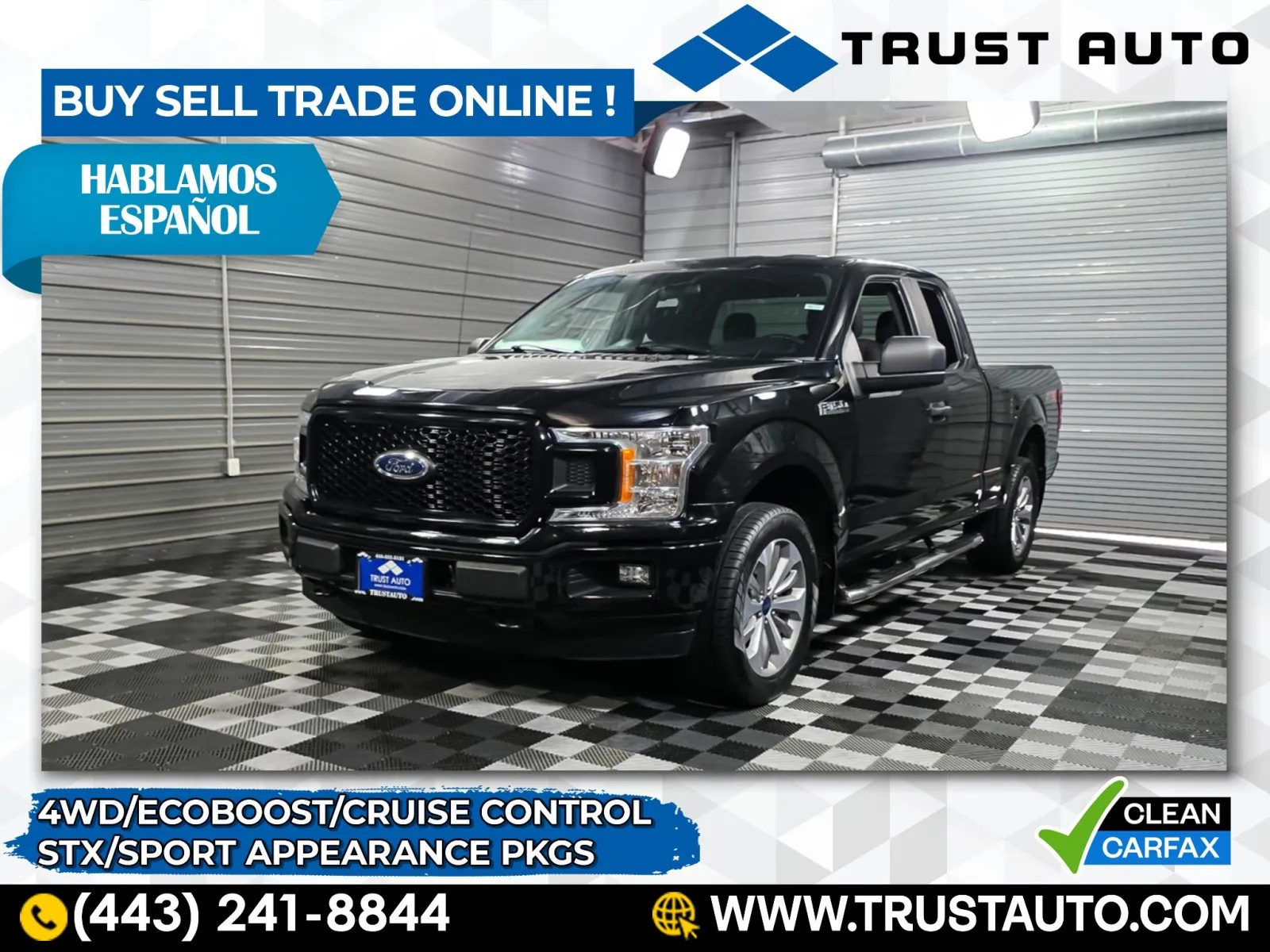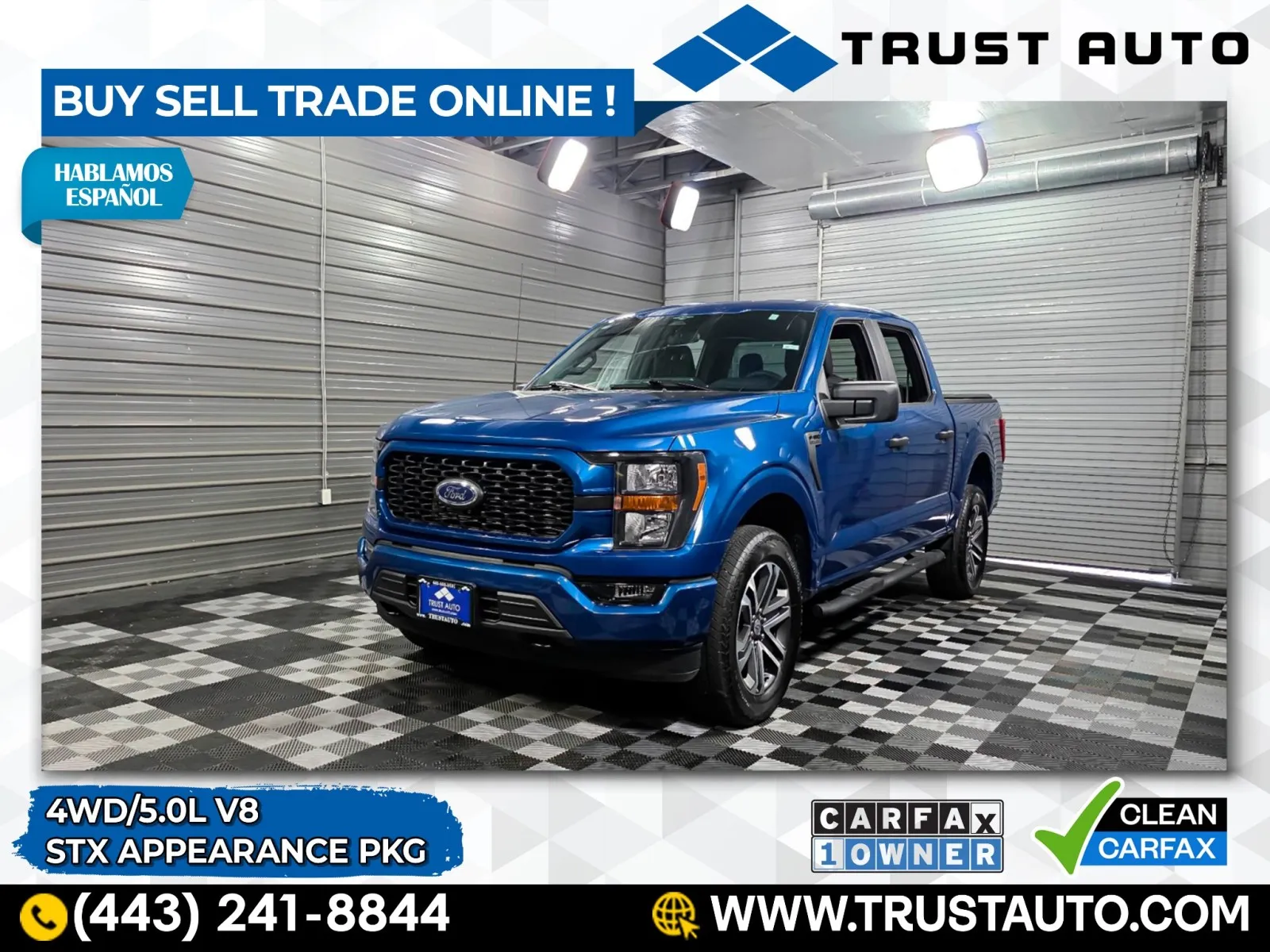The Ultimate Pickup Truck Buyer's Guide

The Ultimate Pickup Truck Buyer’s Guide | Trust Auto
Head down a highway or even a suburban street, and you’ll notice that pickup trucks are everywhere. What was once a vehicle for all work and no play has steadily become a mainstream form of transportation. More than 20 percent of new vehicles sold today are pickups. And for more than four decades, the best-selling vehicle of any kind in the U.S. has been the Ford F-150 . With that said, perhaps you’re looking at joining the truck movement and don’t know where to start. We’re happy to help. Read on and explore what to understand before buying your first truck.
Pickup Truck Categories
Just as with passenger cars and SUVs, automakers offer pickups in various styles, with the main categories being:
- Compact
- Mid-Sized
- Full-Sized
- Heavy Duty
Compact Pickup
As the name implies, compact pickups are the smallest version of everyday trucks. Initially gaining a foothold in the 1970s with examples like the Ford Courier and Chevrolet LUV, they lost favor as Americans gravitated to larger offerings. But, this category is enjoying a resurgence with the recent debuts of the Ford Maverick and Hyundai Santa Cruz. While these newest pickups have more in common with the unibody construction of a crossover, they nonetheless are trucks thanks to a cargo bed and tailgate in the back.
At the same time, both the Maverick and Santa Cruz offer two-row seating and numerous car-like amenities. Demand for the Maverick has been so intense that Ford recently delayed new orders so the factory could catch up. While no other compact pickups are on the horizon, this may not be the case for long as other automakers won’t want to miss out on sales.
Midsize Pickup
A midsize pickup is ideal for buyers wanting truck utility without the bulk of a Ford F-150 or Chevrolet Silverado. You’ll have plenty of room for hauling and still be able to park at the grocery store with ease. Models to consider are the Ford Ranger, Chevrolet Colorado, GMC Canyon, Jeep Gladiator, Nissan Frontier, and Toyota Tacoma.
Interestingly, the Ranger originally was a compact truck during its earlier years (1983-2012), but Ford upped its size when reintroducing the vehicle for the 2019 model year. Similarly, the Colorado and Canyon gained some bulk when General Motors introduced second-generation versions in 2011. A midsize truck is best suited for moderate hauling and trailering. More substantial duties may best be performed by a larger pickup with a more robust engine and suspension.
We’ll also put the Honda Ridgeline into the mid-sized category. Although it’s bigger than the other trucks mentioned here, its crossover roots (think of it as a Honda Pilot with a cargo bed) mean the Ridgeline doesn’t have the capability of a full-sized truck. But, for truck shoppers wanting a spacious two-row option that doesn’t drive like a pickup, the Ridgeline is worth checking out.
Full-Sized Pickup
More full-sized pickups are sold than any other truck. It’s a segment that makes up a significant portion of profitability for the Detroit Three. While Ford enjoys a long reign as sales champ, the second and third spots are occupied by the Chevy Silverado 1500 and RAM 1500 (which had a Dodge badge until 2009). Other models in this category include the GMC Sierra, Nissan Titan, and Toyota Tundra . RAM also offers its previous-generation truck under the 1500 Classic label.
The reason for the popularity of these trucks is that there’s something for everyone. Buyers can choose from a basic three-seat version to a six-seat pickup with luxury features that would be at home in a BMW or Mercedes. And each manufacturer offers a dizzying amount of options.
We’ll go into more detail later, but these trucks are available in a wide variety of configurations that involve a choice of engine, cab, and bed size. As such, a new pickup can range from $30,000 to over $100,000. There are few vehicle categories with such a price gap.
But a full-sized truck is all about capability. Even the base versions can tow a boat or handle a load of drywall with ease and then be ready for a night out on the town.
Heavy-Duty Pickup
If 10,000-14,000 pounds of towing ability isn’t enough or you have special hauling needs, then put a heavy-duty pickup on your shopping list. The Ford Super Duty, Chevy Silverado HD, GMC Sierra HD, RAM 2500/3500, and Nissan Titan XD are steroid-filled versions of the regular full-sized trucks. Depending on the brand, you may have to look hard to see the difference, but underneath each truck lies a robust powertrain with a suspension to match. These trucks are available with a dual-rear-wheel setup depending on the brand and trim. A “dually” has two rear wheels on each side for extra stability and function during heavy loads or extreme trailering. A "dually" has two rear wheels on each side for extra stability and function during loads of extreme tailering, the experts at EastCoastTowing explain.
Pickup Truck Configurations
Seating and Cab Style
Most pickup trucks come in three cab styles: standard (two doors), extended (two rows smaller rear access doors), and crew (four regular doors). Not every truck will be available in every cab style, and some manufacturers may use different labels. For example, an extended-cab Ford F-150 is called Super Cab, while the crew version is dubbed SuperCrew. If you regularly carry more than two people, then the extra space offered by an extended or crew-cab pickup is a no-brainer.
Keep in mind things can get tricky if you need to transport six people. Not every two-row pickup is set up for three occupants in the front; this usually is only the case in lower trims (higher-end versions typically have dual front bucket seats with a center console).
Cargo Bed Size
The whole point of buying a pickup is the cargo bed, so getting a handle on your load requirements is essential. For instance, if you regularly carry 4’ x 8’ sheets of drywall or plywood, then the fitting of this cargo between the wheel wells of a mid-sized (or smaller) truck is out of the question. On the other hand, bags of mulch will fit in any sized pickup.
Standard bed length in a full-sized truck is about eight feet, but an extended or crew cab may shorten things by one to three feet. It comes down to determining priorities, cab size, or bed length. The same thing applies to a midsize pickup. Is an extended cab with a six-foot bed workable? Or, will you go with a five-foot bed to get a larger crew cab?
Although not directly tied into bed size, you may want to explore what bed liner options are available and if the truck has a tailgate upgrade (such as a power function).
Cargo Capacity
Going hand-in-hand with bed size is how much cargo you can carry. Again, casual loads are acceptable for any truck, but you’ll need to step up if your requirements are more substantial. A Ford Maverick can handle 1,500 pounds (including passengers), while a Chevy Silverado 3500HD can haul 7,400 pounds.
Towing Capacity
Towing strength varies greatly among pickups, even between trucks in the same category. As an illustration, the Maverick can tow as much as 4,000 pounds, while the Hyundai Santa Cruz can handle up to another 1,000 pounds. It’s a difference that may determine what ski boat you bring along for a weekend adventure. Serious towing capacity begins with full-sized pickups and handling 10,000 to 14,000 pounds. But some truck shoppers need even more ability, and this is when the strength of a heavy-duty pickup comes into play. The vehicles are engineered to manage 20,000 pounds or more. And the two-wheel-drive F-450 Super Duty is rated for a mind-boggling 37,000-pound gooseneck trailer load.
Engines
At the heart of every pickup is the engine. Compact and mid-sized pickups may come with one or two power plants, but bigger domestic trucks have various options. There are no fewer than five engine choices for a current F-150 and these range from a 290-horsepower naturally aspirated V-6 to 400-horsepower 5.0-liter V-8. There are even turbocharged choices, including a twin-turbo V-6 hybrid that cranks out 430 horsepower. But, for a Diesel-powered Ford, you’ll have to look at the Super Duty.
Likewise, Chevy and GMC offer a menu of engines, including the base turbo four-cylinder that provides a respectable 310 horsepower and 420 lb-ft of torque. Among the other choices are a big-block V-8 and turbo inline-six Diesel. RAM keeps things simplified with either a V-6 or V-8. And, like Ford, you’ll have to upgrade to a 2500 or 3500 heavy-duty truck to get a RAM Diesel.
A pickup truck’s engine should match your needs. If your focus is on fuel economy, sticking with a base power plant will help. But, if you’re likely to max out a truck’s cargo or towing limits, then you’ll want an upgraded power plant to support the efforts.
Maryland’s Used Truck Headquarters
Choosing a premium pre-owned truck is easy at Trust Auto in Sykesville. Our extensive inventory of high-quality trucks from Chevy , Ford , GMC , Nissan , R A M , and Toyota lets you explore all your options in one convenient place. Check out our complete inventory and contact us today to schedule a virtual or in-person appointment.











